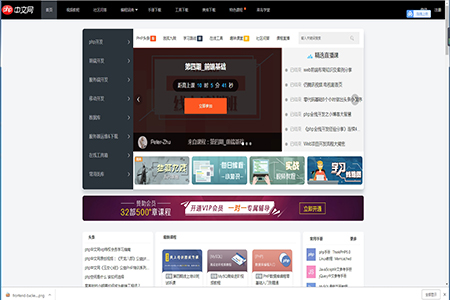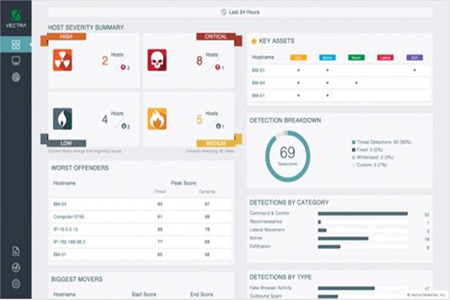What is the difference between frontend and backend
The difference between the front-end and the back-end is that the front-end is the part that we can directly view, mainly written in HTML, CSS and other languages; the back-end is the side that users cannot see and runs in the server, mainly through java , written in Python and other languages. (Recommended: php Chinese online live class (front-end and back-end applet))
In the process of web development, the front-end and the back-end are two The most commonly used terms, they play an important role in web development. The front end is what we see of the user interface and the back end is the part that we cannot see and interact with. Next, in the article, we will introduce the difference between the two in detail

What is the front-end?
The front end is the part that we can directly view, it involves everything that users can see, touch and experience. For example, the various graphics, buttons, pictures, navigation menus, etc. you see on the website. The front end is also called the "client side" because the action takes place on the client side which in this case is the user's side. Usually the client refers to a computer application, such as the web browser that is viewing it. Front-end development mainly involves designing websites. Use a combination of tools (including HTML, CSS and JavaScript) to create a visually appealing and user-friendly design interface[Recommended tutorial: Quick Start to Front-End Development】

What is the backend?
The backend is called the "server side" and is the part we cannot see. It is more like an indirect service provider for front-end development. It is the part of the system that does not have direct contact with the user. Unlike the frontend, it runs on the server side but communicates with the frontend to make sure everything is working properly. In every application, there's also a large portion of non-UI code that handles all the complex systems going on in the background. The people who handle the backend are usually programmers and developers.
Backend developers handle everything that doesn't involve generating a user interface, such as writing APIs, creating libraries, or adding utilities to everything created by web designers. They facilitate communication between the presentation layer and the business layer. They play a vital role in web development and their role is highly collaborative compared to front-end web designers. In short, backend web development is the combination of development and maintenance of the core functional logic of a software application. Simply put, back-end developers write code to make sure everything works properly on the front-end. Compared to web designers, they tend to spend more time figuring out logic and implementing algorithms to ensure the website functions properly. This is the brain of a website.
【Recommended course: Server-side tutorial】

Difference between front-end and back-end
Meaning:
The front-end is the part of the website that is visible to the user, e.g. Graphical user interface (GUI) and command line, including design, navigation menus, text, images, videos, etc. In contrast, the backend is the part of the website that users cannot see and interact with. It's all about how everything works.
Function:
Both play a vital role in web development, and although they have considerable differences, they are like the same Two sides of the same coin. The front end is about the visual aspects of the website that users can see and experience. Instead, everything that happens in the background can be attributed to backend web development. It's more of an enabler of the front-end web experience.
Coding language:
The front end is also called the "client" instead of the backend, which is basically the "server side" of the application. Code languages for back-end web development include java, Ruby, Python, PHP, .Net and other languages. The most common front-end languages are HTML, CSS and JavaScript
Summary: The above is all the content of this article. I hope this article can help everyone have a certain understanding of the front-end and back-end
The above is the detailed content of What is the difference between frontend and backend. For more information, please follow other related articles on the PHP Chinese website!

Hot AI Tools

Undresser.AI Undress
AI-powered app for creating realistic nude photos

AI Clothes Remover
Online AI tool for removing clothes from photos.

Undress AI Tool
Undress images for free

Clothoff.io
AI clothes remover

Video Face Swap
Swap faces in any video effortlessly with our completely free AI face swap tool!

Hot Article

Hot Tools

Notepad++7.3.1
Easy-to-use and free code editor

SublimeText3 Chinese version
Chinese version, very easy to use

Zend Studio 13.0.1
Powerful PHP integrated development environment

Dreamweaver CS6
Visual web development tools

SublimeText3 Mac version
God-level code editing software (SublimeText3)

Hot Topics
 1386
1386
 52
52
 What is the purpose of the <progress> element?
Mar 21, 2025 pm 12:34 PM
What is the purpose of the <progress> element?
Mar 21, 2025 pm 12:34 PM
The article discusses the HTML <progress> element, its purpose, styling, and differences from the <meter> element. The main focus is on using <progress> for task completion and <meter> for stati
 Is HTML easy to learn for beginners?
Apr 07, 2025 am 12:11 AM
Is HTML easy to learn for beginners?
Apr 07, 2025 am 12:11 AM
HTML is suitable for beginners because it is simple and easy to learn and can quickly see results. 1) The learning curve of HTML is smooth and easy to get started. 2) Just master the basic tags to start creating web pages. 3) High flexibility and can be used in combination with CSS and JavaScript. 4) Rich learning resources and modern tools support the learning process.
 What is the purpose of the <datalist> element?
Mar 21, 2025 pm 12:33 PM
What is the purpose of the <datalist> element?
Mar 21, 2025 pm 12:33 PM
The article discusses the HTML <datalist> element, which enhances forms by providing autocomplete suggestions, improving user experience and reducing errors.Character count: 159
 What is the viewport meta tag? Why is it important for responsive design?
Mar 20, 2025 pm 05:56 PM
What is the viewport meta tag? Why is it important for responsive design?
Mar 20, 2025 pm 05:56 PM
The article discusses the viewport meta tag, essential for responsive web design on mobile devices. It explains how proper use ensures optimal content scaling and user interaction, while misuse can lead to design and accessibility issues.
 What is the purpose of the <iframe> tag? What are the security considerations when using it?
Mar 20, 2025 pm 06:05 PM
What is the purpose of the <iframe> tag? What are the security considerations when using it?
Mar 20, 2025 pm 06:05 PM
The article discusses the <iframe> tag's purpose in embedding external content into webpages, its common uses, security risks, and alternatives like object tags and APIs.
 The Roles of HTML, CSS, and JavaScript: Core Responsibilities
Apr 08, 2025 pm 07:05 PM
The Roles of HTML, CSS, and JavaScript: Core Responsibilities
Apr 08, 2025 pm 07:05 PM
HTML defines the web structure, CSS is responsible for style and layout, and JavaScript gives dynamic interaction. The three perform their duties in web development and jointly build a colorful website.
 What is the purpose of the <meter> element?
Mar 21, 2025 pm 12:35 PM
What is the purpose of the <meter> element?
Mar 21, 2025 pm 12:35 PM
The article discusses the HTML <meter> element, used for displaying scalar or fractional values within a range, and its common applications in web development. It differentiates <meter> from <progress> and ex
 Understanding HTML, CSS, and JavaScript: A Beginner's Guide
Apr 12, 2025 am 12:02 AM
Understanding HTML, CSS, and JavaScript: A Beginner's Guide
Apr 12, 2025 am 12:02 AM
WebdevelopmentreliesonHTML,CSS,andJavaScript:1)HTMLstructurescontent,2)CSSstylesit,and3)JavaScriptaddsinteractivity,formingthebasisofmodernwebexperiences.




